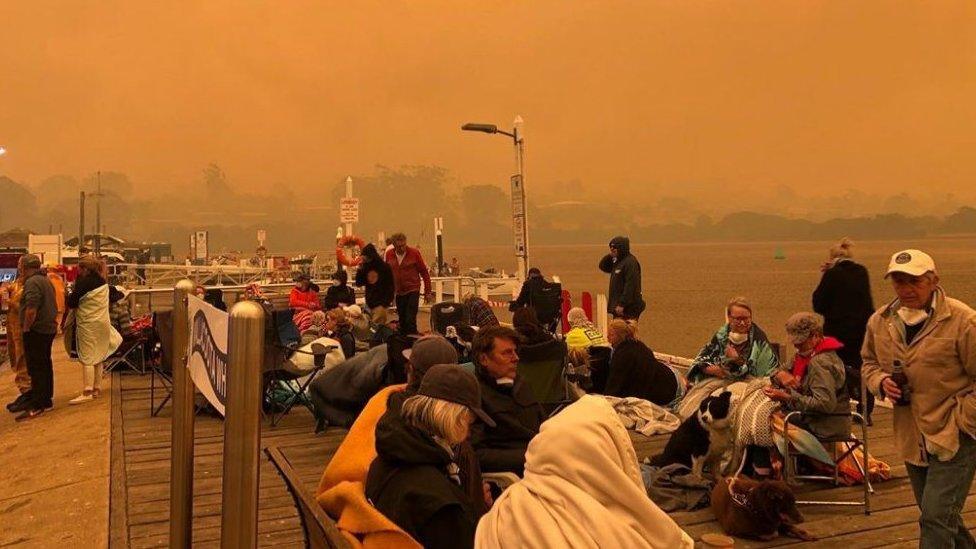Australia fires: Navy rescues people from fire-hit Mallacoota
- Published
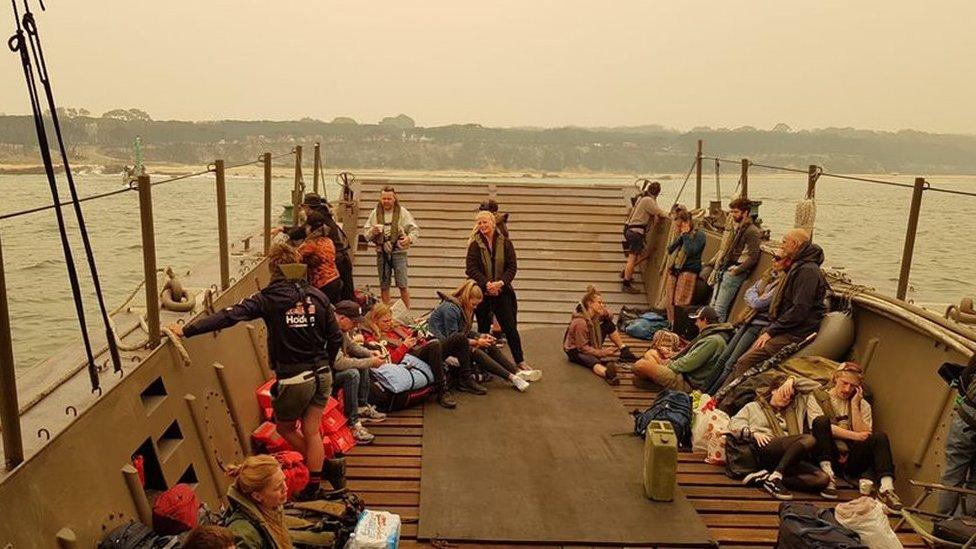
Evacuees were taken from the shore to larger ships
The Australian navy has evacuated around 1,000 tourists and residents who were trapped in the fire-ravaged town of Mallacoota on the Victoria coast.
Throughout Friday, landing vessels took people to two ships - MV Sycamore and the much larger HMAS Choules.
A local MP, Darren Chester, called it an "unprecedented mass relocation of civilians".
Some 4,000 residents and tourists fled to the beach on Monday night, when racing bushfires encircled the town.
The evacuees will be taken to Western Port, the navy said - around 16 hours' voyage down the coast.
With roads cut off, the military evacuated around 60 people by helicopter on Thursday. The air has so far been too smoky for further air evacuations.
The evacuation was voluntary. By Thursday night, 963 had signed up for the boats, with a few more doing so on Friday morning, Commander Scott Houlihan said.
The larger ship, HMAS Choules, has a "few hundred beds". Further trips are possible, depending on demand.
The evacuees were allowed to take their pets on the ship.
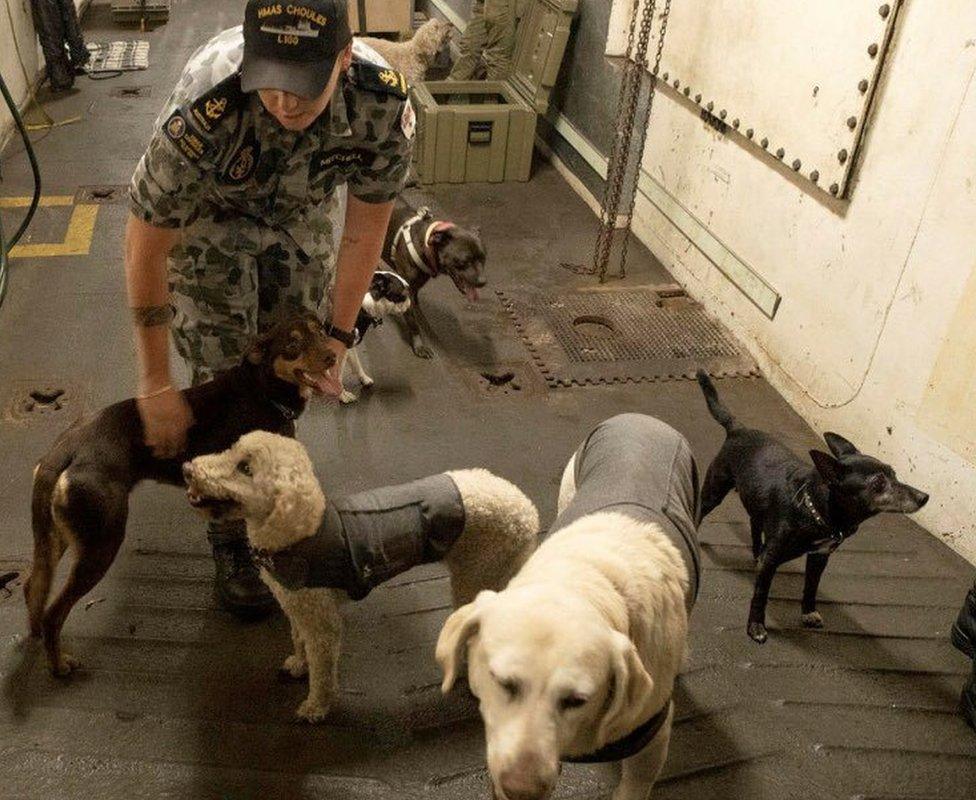
Victoria's Premier Daniel Andrews declared a state of disaster, external for six areas and resorts, including Mallacoota.
"Some people will want to go, some people will be happy to stay," he said of the evacuation.
High temperatures and strong winds are forecast for the weekend, leading to what officials call "widespread extreme fire danger".
In other parts of Victoria, people were urged to evacuate by road in convoy, external. There were also large queues at railway stations, external.
"It is forecast we will see dry thunderstorms coming across the state and the potential of lightning strikes," Andrew Crisp, emergency management commissioner for Victoria, warned on Friday.
He called on people to leave as soon as possible.
"This is your opportunity to get out," he said. "It is not just the fires we know [about]. It is the new fires that might start today."
Thousands of people are also fleeing parts of neighbouring New South Wales, where a week-long state of emergency is in force.
Since September fires have killed at least 20 people in the two states and dozens remain missing.
The fires have so far destroyed more than 1,300 homes.
"You're an idiot, mate": Australian PM Scott Morrison heckled by bushfire victims
Meanwhile, Prime Minister Scott Morrison has come under attack for his response to the fires.
He was heckled by angry locals in Cobargo, New South Wales, and had to cut short his visit to the fire-hit town.
In a news conference on Friday, he said he understood people's anger and that they had "suffered a great lot" and were "feeling very raw".
Mr Morrison has also faced criticism for his climate change policies, with many saying urgent action must be taken.
But he insists that Australia is meeting the challenge "better than most countries" and fulfilling international targets.
Opposition Labor leader Anthony Albanese said the government was not doing enough.
Mr Morrison was earlier criticised for going on holiday to Hawaii as the bushfire crisis worsened. Public anger at his absence eventually forced him to cut that trip short.




There's never a single reason why wildfires escalate and, in the case of Australia, a perfect storm of factors is involved.
The country regularly sees fires but they are usually centred on bushland while the current blazes are striking forests, which burn hotter and higher so are harder to tackle.
There's plenty to ignite. A programme to create firebreaks - deliberately clearing vegetation to prevent it from catching fire - has unfolded less quickly than hoped. It's slow, labour-intensive work, and expensive too.
On top of all this, a pattern of unusually dry weather over the past three years culminated in the driest spring on record at the end of last year.
That left many areas vulnerable to fire, particularly when 2019 also proved to be Australia's hottest on record - and warmer conditions cause more evaporation, adding to the risk.
All this has sharpened Australia's divisions over climate change. A coal-rich economy that depends on fossil fuels faces new questions about its own hand in raising temperatures.

What about other parts of Australia?
In the capital Canberra - an administrative region surrounded by NSW - bushfire smoke meant air quality there was rated the third worst of all major global cities on Friday, according to Swiss-based group AirVisual.
An elderly woman died after being exposed to the smoke as she exited a plane at Canberra airport, local reports say. Australia Post has suspended deliveries in the city "until further notice".
The university campus of Australian National University has been closed until 7 January as a "precautionary measure".
Two regions of Western Australia (WA) were also facing catastrophic fire danger on Thursday, and parts of South Australia were expected to see extreme conditions on Friday.
Meteorologists say a climate system in the Indian Ocean, known as the dipole, is the main driver behind the extreme heat in Australia.
However, many parts of Australia have been in drought conditions, some for years, which has made it easier for the fires to spread and grow.
BBC Weather's Helen Willetts explains what's driving Australia's intense heat

Have you been told to evacuate? You can get in touch by emailing haveyoursay@bbc.co.uk, external if it is safe for you to do so.
Please include a contact number if you are willing to speak to a BBC journalist. You can also contact us in the following ways:
WhatsApp: +44 7756 165803
Tweet: @BBC_HaveYourSay, external
Send pictures/video to yourpics@bbc.co.uk, external
Text an SMS or MMS to 61124 or +44 7624 800 100
Please read our terms & conditions and privacy policy
- Published2 January 2020
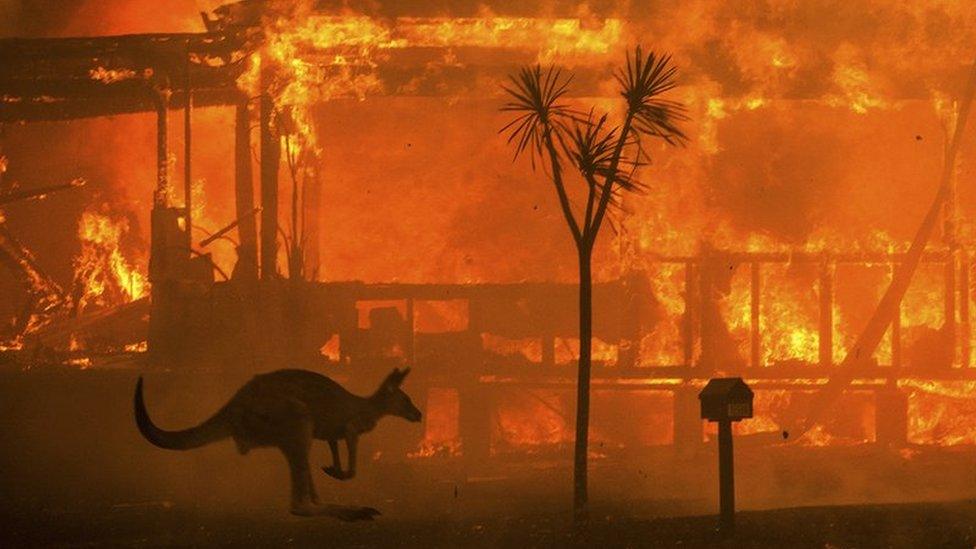
- Published7 January 2020
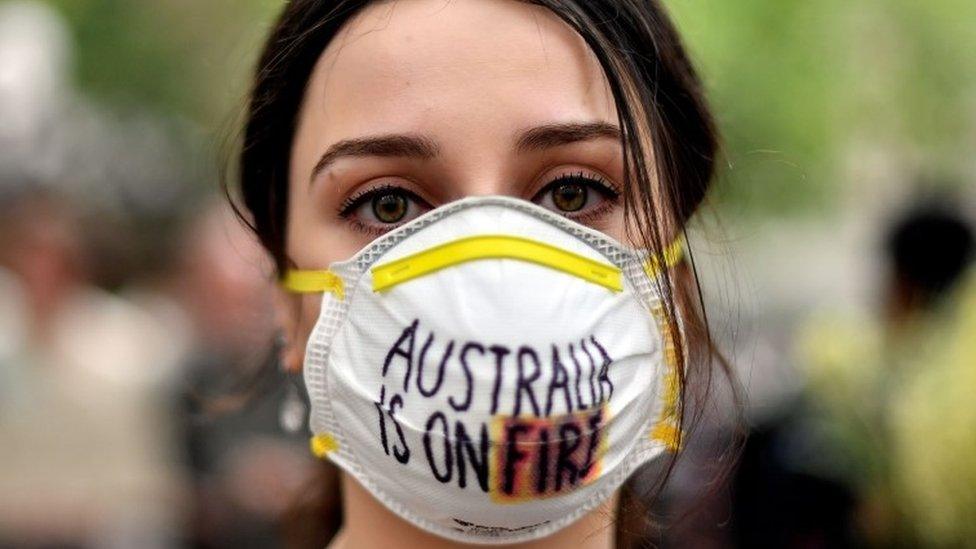
- Attribution
- Published1 January 2020
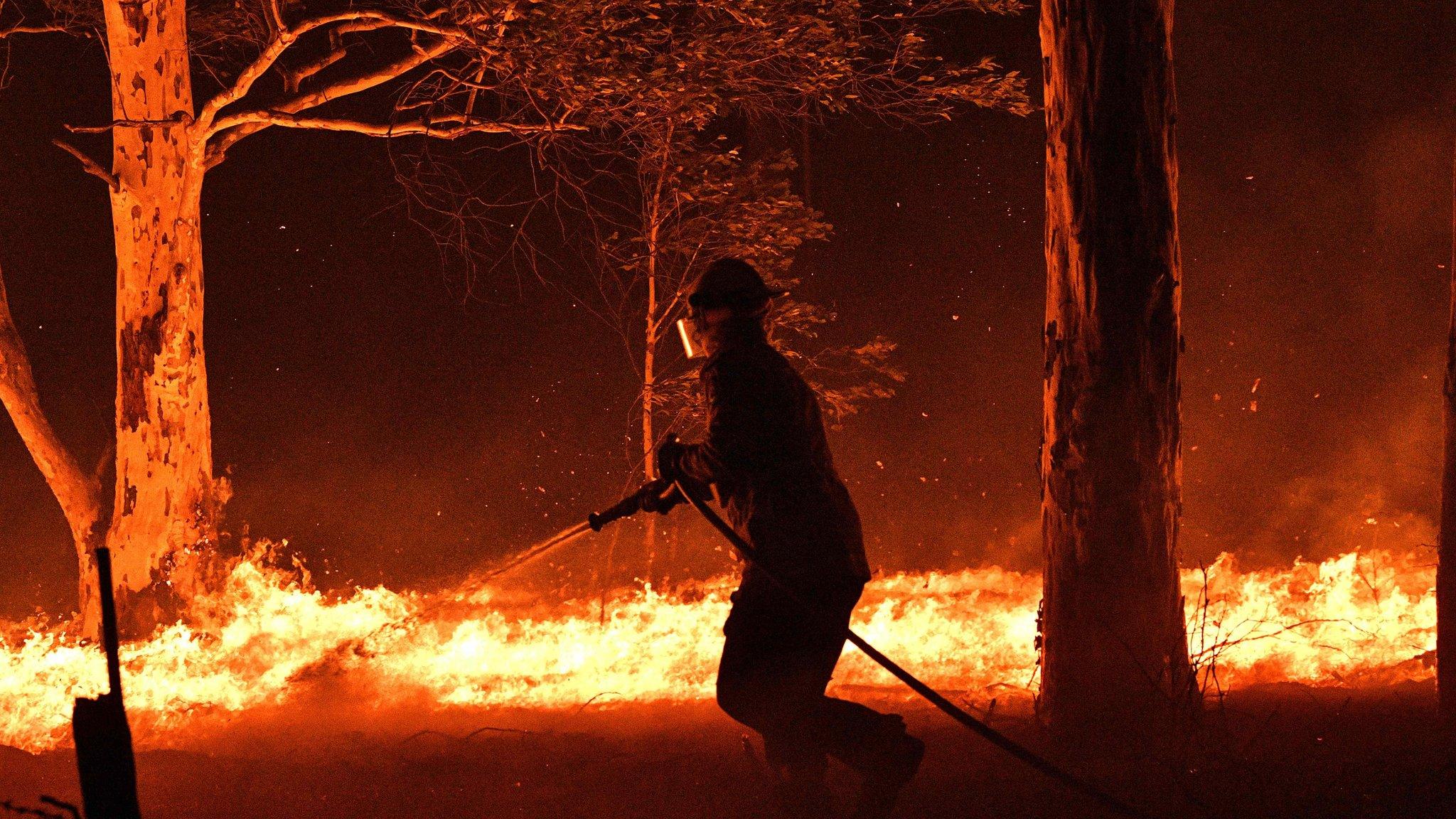
- Published31 December 2019
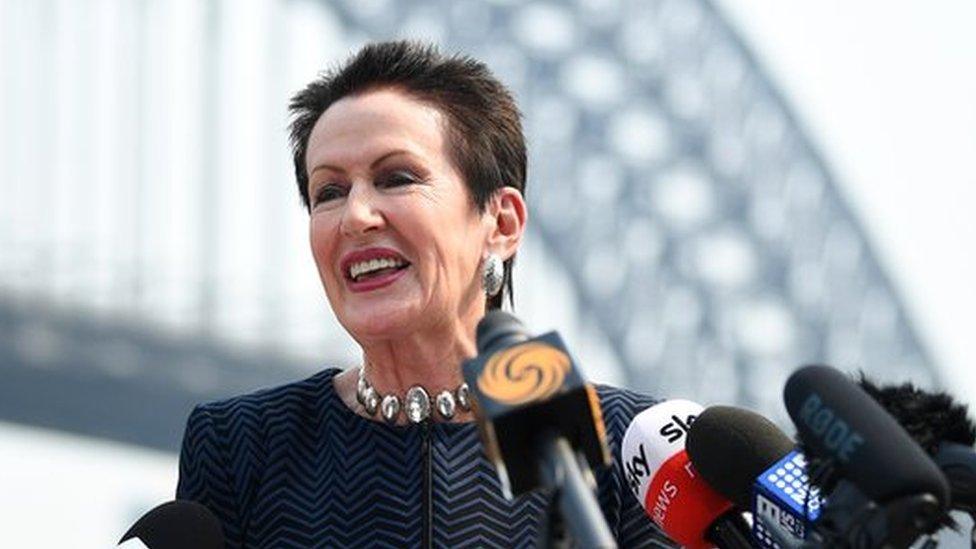
- Published31 December 2019
